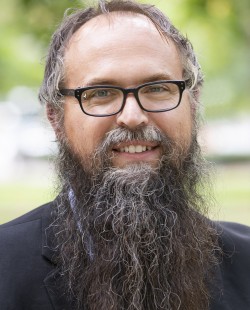Climate of the Great Plains
The Great Plains is a vast region in North America, extending from Canada through the central United States, encompassing states such as Texas, Oklahoma, Kansas, Nebraska, and the Dakotas. This region is characterized by its unique climate, which plays a crucial role in shaping agricultural practices, weather patterns, and the lifestyle of its inhabitants.
General Climate Characteristics
Continental Climate
The Great Plains predominantly experience a continental climate, marked by hot summers and cold winters. This results in significant temperature fluctuations throughout the year, with average temperatures varying greatly between seasons.
Semi-Arid to Humid Conditions
The climate also varies across the region:
– Eastern Great Plains: Generally more humid, receiving higher rainfall.
– Western Great Plains: More semi-arid, characterized by lower precipitation levels.
Seasonal Climate Patterns
Summers (June to August)
Summers in the Great Plains are typically hot, with temperatures ranging from 80°F to 100°F (27°C to 38°C), especially in southern areas. The heat is often accompanied by strong winds and can lead to drought conditions.
Winters (December to February)
Winters can be severe, with temperatures frequently dropping below freezing. Northern areas experience harsher conditions, while southern regions may have milder winters. Snowfall varies significantly, with heavier accumulations in the north.
Spring and Fall
Spring and fall bring milder temperatures but also increased storm activity. Spring is particularly known for severe weather events, including thunderstorms and tornadoes.
Precipitation and Humidity
Precipitation Gradient
Precipitation levels across the Great Plains exhibit a gradient:
– Eastern Great Plains: Receives approximately 20–40 inches of rainfall annually.
– Western Great Plains: Receives about 10–20 inches annually, making it drier and more suitable for ranching.
Tornado and Severe Storm Activity
The Great Plains are famously part of “Tornado Alley,” where warm, moist air from the Gulf of Mexico collides with cold, dry air from Canada. This interaction leads to frequent thunderstorms and tornadoes during spring and early summer.
Impact on Agriculture and Lifestyle
Agricultural Suitability
The climate significantly influences agricultural practices:
– Eastern Plains: Fertile soil and adequate rainfall support crops like corn, wheat, and soybeans.
– Western Plains: Drier conditions favor cattle ranching.
Weather Preparedness
Residents must remain vigilant for extreme weather events such as tornadoes and droughts, which can greatly affect both farming practices and daily life.
Climate Challenges in the Great Plains
Droughts and Water Scarcity
The western parts of the Great Plains are prone to droughts that impact water availability for agriculture. The region heavily relies on resources like the Ogallala Aquifer for irrigation.
Soil Erosion
Wind erosion poses a significant threat during dry periods. Poor land management can lead to severe soil degradation, reminiscent of historical events like the Dust Bowl.
Frequently Asked Questions (FAQs)
– What type of climate is found in the Great Plains?
The region has a continental climate with hot summers and cold winters.
– How much rainfall do the Great Plains receive?
Rainfall ranges from about 10–20 inches in the west to 20–40 inches in the east annually.
– Are tornadoes common in the Great Plains?
Yes, this area experiences frequent tornadoes and severe storms during spring.
– How does the climate impact agriculture?
The varied climate supports diverse agricultural practices across the region.
– Do the Great Plains experience drought?
Yes, particularly in western areas where water scarcity is a concern.
Conclusion
In summary, the Great Plains are characterized by a continental climate with distinct seasonal variations that significantly influence agriculture and lifestyle. The region faces challenges such as droughts and severe weather events but remains a vital area for food production in North America. Understanding these climatic factors is essential for adapting agricultural practices and preparing for future climate-related challenges.

Kyle Whyte is a notable scholar and professor at the University of Michigan, holding positions such as the George Willis Pack Professor in the School for Environment and Sustainability and Professor of Philosophy. Specializing in environmental justice, his work critically examines climate policy and Indigenous peoples’ ethics, emphasizing the nexus between cooperative scientific endeavors and Indigenous justice. As an enrolled Citizen Potawatomi Nation member, he brings a vital perspective to his roles as a U.S. Science Envoy and member of the White House Environmental Justice Advisory Council. His influential research is supported by various prestigious organizations including the National Science Foundation, and disseminated through publications in high-impact journals. Kyle actively contributes to global Indigenous research methodologies and education, with affiliations to numerous institutes and societies dedicated to traditional knowledge and sustainability. Recognized for his academic and community engagement, Kyle has earned multiple awards and served in various visiting professorships. His efforts extend to leadership positions on boards and committees focused on environmental justice nationwide.
